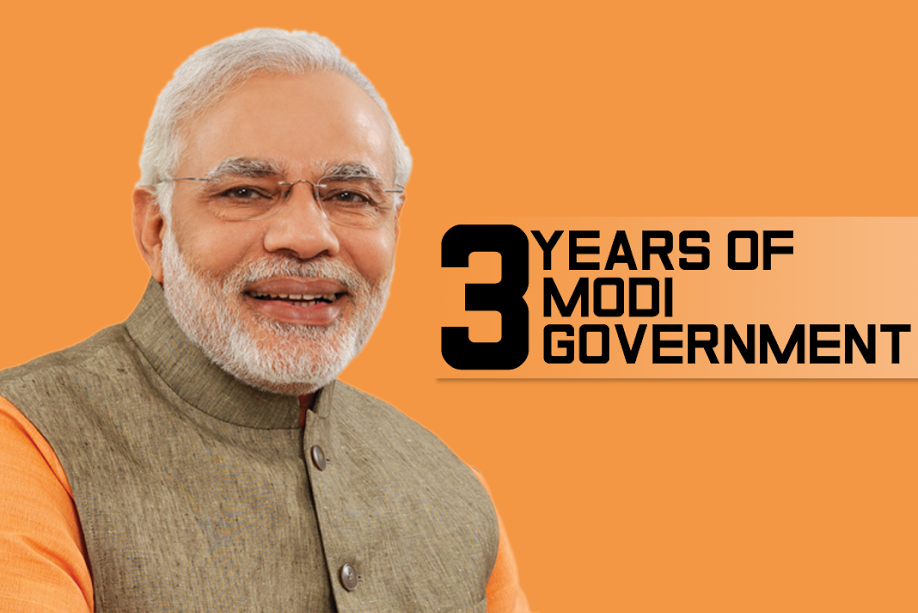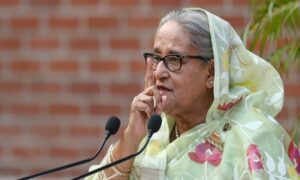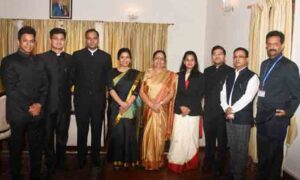
In 2014, the National Democratic Alliance (NDA) came into power after a landslide electoral victory under the leadership of Narendra Modi. Consistent with the vision of Narendra Modi, the Prime Minister of India, the Union Government unveiled Digital India as a nationwide campaign which has the vision to transform India into a digitally empowered society and knowledge economy. Digital India campaign is basically an eGovernance campaign to lag the digital divide and empower citizens in India.
According to the Second Administrative Reforms Commission, the goal of eGovernance are: a. Better service delivery to citizens b. Ushering in transparency and accountability c. Empowering people through information d. Improved efficiency within Governments e. Improve interface with business and industry
India started its eGovernance programme in the nineties which grabbed the attention from various hues. People who advocated such changes and adoptions faced a severe criticism from various hues. Initially, people were reluctant to adopt them. Despite such hiccups, several state governments adopted the innovative eGovernnace programmes to deal with challenges of the public service delivery. It is evident that digital tools addressed several challenges. With increasing economic might of India, policy makers started inculcating digital tools. Such tools overcome challenges in delivering social benefits to the intended beneficiaries. Simultaneously, they started convincing people for adopting. People, especially in the remote areas, were grappling with multiple challenges like leakages in the Public Distributions System (PDS), delay in scholarships etc.
The increasing democratisation of ICT has brought a whole agenda for governance into the realm of possibility. The Union Government launched National e-Governance Plan (NeGP) in 2006. In the NeGP, more than thirty mission mode projects (MMP) started across the country. A SWOT analysis of NeGP reveals several issues related to adopting new technologies, transforming processes and improving implementation that need to be addressed urgently.
Pillars of Digital India:
The Ministry of Electronics and IT (MeitY) is the nodal ministry for Digital India. The above-mentioned “Nine Pillars” are core of this flagship programme. Under the rubric of Digital India, the Union Government is making a concerted effort to improve IT infrastructure, internet speed, and penetration. With help from various stakeholders, Digital India aims to provide the much needed thrust to the nine pillars of growth areas, namely:
- Broadband Highways
- Universal Access to Mobile Connectivity
- Public Internet Access Programme
- e-Governance: Reforming Government through Technology
- e-Kranti – Electronic Delivery of Services
- Information for All
- Electronics Manufacturing
- IT for Job
- Early Harvest Programmes
(Source:http://pib.nic.in/newsite/PrintRelease.aspx?relid=108926)
The Union Government underlined the importance of Digital India in the Union Budget 2017-18. Shedding light on the importance of Digital India, the Union Minister of Finance Minister said, “Digital economy helps in cleaning up the system, has transformational impact, energizes private investment through low-cost credit, and benefits the common man.”
According to the official sources, Digital India initiative has transformed the digital profile of India significantly. Some of the key indicators are:
Phone Users: From 95 Crore phone users in June 2014, India today has 108 Crore mobile phone users.
Aadhaar Holders: From 63 Crore Aadhaar holders in 2014, India today has 111 Crore Aadhaar holders.
Investments in Electronic Manufacturing: Investments in electronic manufacturing which was just Rs. 11,000 Crore in June 2014, has increased to Rs. 1, 27,880.
Mobile Phone Manufacturing Hub: From 6 Crore mobile handsets in 2014-15, India’s mobile manufacturing capacity has increased to 11 Crore mobile handsets in 2015-16. With 72 new mobile handset and component manufacturing units set up in last two years, India has emerged as a mobile manufacturing hub.
Common Service Centers: To provide digital services to common people in villages the Common Services Centers were created. In June 2014, only 83,000 such centers were active across the country, which has now increased to 2.05 lakh centers.
Bharat Net: Optical Fibre Network to connect villages of India has seen rapid growth. In June 2014, only 358 kms of the optical fibre was laid. In January 2017 1.72 lakh kms of the optical fiber has been laid across more than 76, 000 Gram Panchayats.
MyGov: A new platform created for participative governance now has over 40 lakh registered users.
Jeevan Pramaan Portal: A new initiative to provide convenience to pension holders was created which now has 56 lakh registered pensioners.
Digi Locker: A new initiative to provide safe online document storage to citizen now has more 42 lakh users. More than 165 crore digital documents have been issued by the Government in these lockers.
Scholarship Portal:
Online Hospital Appointment: Online appointment services in 60 major hospitals have been started. Total 47 lakh appointments have been taken online.
eNAM: Online National Agriculture Market was created so that farmers can get the best price for their produce.
Growth in Digital Transactions: eTaal portal which measures the digital transactions of various eGovernance services has seen a rapid growth
Computerization of Land Records: Land records have been computerized in 31 states and Union Territories. Record of Rights (RORs) made online for 22 States/UTs. Bhu-Naksha/ Map digitization done for 15 States/UTs.
Digi Dhan Abhiyaan: To promote digital payments across the country, Digi Dhan Abhiyaan was launched in December 2016. Under this effort of the Ministry, more than 2 Crore people and 7.18 lakh shopkeepers were trained in digital payments across 5636 blocks of 640 districts.
BHIM App for digital payment
(Source: http://pib.nic.in/newsite/PrintRelease.aspx?relid=158376)
With increasing focus on the paperless payment mode, the MeitY estimates that the infrastructure of digital payments in India is expected to increase three-fold by the end of 2017 with almost five million electronic points of sale (PoS) machines. In the backdrop of the currency swap in 2016, the Union Government, aggressively, advocated Indians to use various modes of payment. With help from a set of policy decisions, Indian Government intends to transform India into a “Digitally Empowered Society”. After three years of the MODI Government, one can say that the full potential of Digital India is yet to be realised.


















